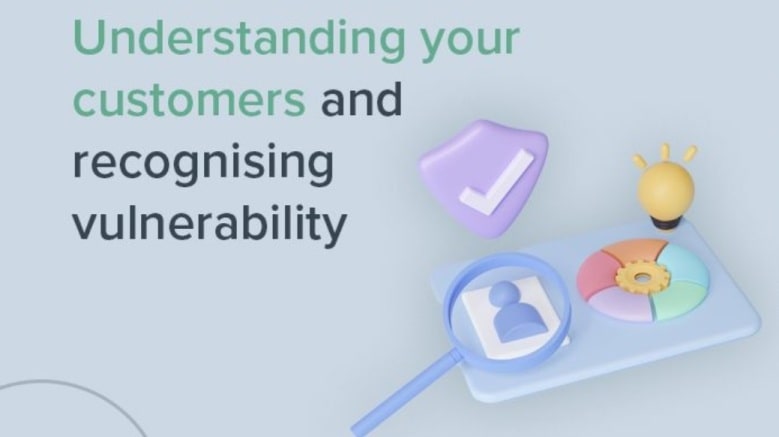The continued cost of living crisis is expected to affect consumers over the course of the year ahead, with an increasing number of people facing into financial hardship, many for the first time.

Ofgem is amongst those leading the charge to demand more from businesses serving such customers. Recently introduced regulations will require utility suppliers to take a more proactive approach to vulnerable customer support. This includes reaching out to customers who have missed payments and offering support, such as affordable payment plans, or even repayment holidays, to help them get back on track. Utility suppliers will also be obligated to publish their Citizen Advice ratings so that customers are better positioned to compare and contrast the quality of customer care provided.
Ofgem’s new regulations focus on encouraging the industry to recognise vulnerability and crucially, to better understand their customer base – something which all sectors, not just utilities, can stand to learn from.
From speaking to our clients, it’s clear that this is a message that’s resonating across the board, with many businesses wanting to introduce systems that help to better understand customers, deliver more personalised CX experiences and proactively identify vulnerabilities. So, let’s take a look at how organisations can kick-start a programme of change focused around the customer and better identifying vulnerabilities.
Build a view of the customer using existing data
An ideal starting point for organisations is to look at the information they already hold about their customers and how this can be built on and segmented. This starts to build a picture of a customer and where necessary – such as if a customer has repeatedly missed bill payments – allows organisations to input system flags, routing treatments or scripting specific to those customers particular needs.
Customer data held within CRMs, Billing Systems, Policy Management and other systems of record provides a rich source of information but must be continuously updated to ensure relevance. After all, a customer who was not previously “vulnerable” may have been impacted by the cost-of-living crisis and may now be struggling to make payments or adhere to the terms of an agreement.
Organisations need to ensure they have the ability to dynamically understand the customers status and adjust their treatment accordingly.
Use technology to gather detailed customer insights
CRM systems can be supplemented with additional tools to build a more comprehensive view of the customer. AI-based speech and text analytics can collate insights from customer interactions enabling agents to see trends in the data and if any issues are recurring. Such tools can also be used to help refine the service that agents provide, surfacing articles and events that provide more context to a customer conversation and provide a more detailed view of the customer. These tools are also beneficial after a customer interaction, identifying, for example, any gaps in the advice given to customers and any future training required to ensure that the customer is served better next time as well as macro-trends and external or internal factors which may be impacting customers.
Piece together the customer journey across digital channels
To ensure that organisations are capturing a full picture of their customers, it is essential that their entire digital journey into the contact centre is joined up. For instance, a customer concerned about paying their bill may opt to initiate their journey via a chatbot enquiry, follow-up with an email, and then initiate a new affordable payment plan over the phone when speaking to an agent. It is essential that, irrespective of the channel used, that each of these stages are viewed as part of the same journey. With more organisations adopting cloud-based omnichannel contact centre solutions, connecting the data from individual channels becomes easier, allowing organisations to build up a comprehensive view of the customer.
Enhance the customer journey
This omnichannel solution can also support the integration of other tools to further enhance and personalise the service delivered to customers. Examples include:
• Capturing customer intent on voice or digital channels – using virtual assistants in queue to capture customer information, including name, reason for calling, and linking this to CRM. This aids Contact Centres in triaging calls, equipping agents with necessary details for prompt assistance, and ultimately ensuring any customer (including those with vulnerabilities) gets to the most skilled agent who is already equipped to deal with them.
• Voice bots and chatbots – can effectively reduce call volumes, providing 24/7 service to customers. They offer quick, standardised answers to frequently asked questions and can even redirect more sensitive queries to trained agents.
• Real-time Agent Assistance – setting predetermined vulnerability trigger words or flags can allow organisations to automatically route any customers showing signs of distress to a specially trained team of agents to deal with vulnerable customers.
Once in place, these technologies can elevate the customer service delivered, providing a better overall standard of care to customers.
Know your customers, improve your business
We all know that customers are the lifeblood of an organisation; investing in understanding them better is essential as we move through the year ahead. Ofgem’s new mandate emphasises the importance of this and how businesses today must prioritise the needs of customers, particularly for those who are vulnerable. There are valuable lessons to learn here and all sectors stand to benefit from taking a more customer-centric and a more personalised approach to customer engagement.
![]()
 Stephen Murray is CX Solutions Director at IPI
Stephen Murray is CX Solutions Director at IPI
Founded in 2001, with its headquarters in Reading and offices in London, Manchester and the Philippines, IPI’s clients include some of the biggest brands in the finance, insurance, retail, travel and leisure, utilities, higher education, and public sectors.
IPI enables brands to meet their digital transformation goals with creative and innovative Contact Centre, Cloud and Connectivity services and solutions, which are proven to drive exceptional customer and employee experiences, as well as better business outcomes and increased revenues.
 Its team of experts add value at every part of the transformation journey, by providing bespoke consultancy services, training and enablement programmes, DevOps and integration, as well as a range of proprietary solutions and managed services, spanning the Contact Centre, automation and AI, workforce engagement, security and compliance, speech and text analytics, voice services, cloud, and outsourced IT.
Its team of experts add value at every part of the transformation journey, by providing bespoke consultancy services, training and enablement programmes, DevOps and integration, as well as a range of proprietary solutions and managed services, spanning the Contact Centre, automation and AI, workforce engagement, security and compliance, speech and text analytics, voice services, cloud, and outsourced IT.
For additional information on IPI view their Company Profile




